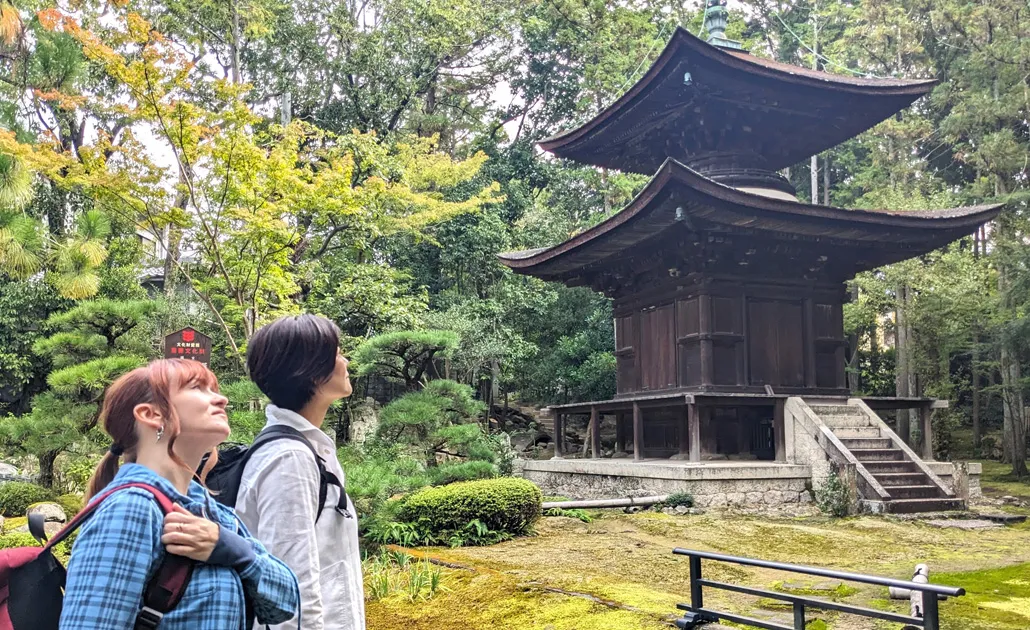Inland Area
Admire Izumisano’s Only National Treasure Explore the Japan Heritage of Izumisano
Inland Area Model Course

Admire Izumisano’s Only National Treasure
Explore the Japan Heritage of Izumisano

This model course takes you on a journey to one of the cultural properties that make up the Japan Heritage story,
“A Town Remembered through Travel Records and Two Illustrated Maps – The Medieval Landscape of Hineno-shō (Hineno-sho)”,
designated as part of the Japan Heritage by the Agency for Cultural Affairs.
TThis historically significant area was developed under the leadership of the Kujō family (Kujō-ke) in 1234.
In 1309, a highly detailed shōen-ezu (medieval estate map) was created, capturing the layout of the village with remarkable precision.
The map vividly illustrates irrigation canals, reservoirs, temples, and shrines, offering a rare glimpse into daily life in medieval Japan for modern visitors.
Take a historical journey through Izumisano by visiting its only National Treasure—the Tahōtō Pagoda (Tahōtō) at Jigen-in Temple (Jigen-in).
Then, stop by Hine Shrine (Hine Jinja), known for prayers for peaceful sleep,
and continue on to the Yukawa Irrigation Canal (Yukawa Yōsui), recognized as a World Irrigation Heritage Site.
In spring, enjoy the beauty of nature at Oizeki Park (Roji Valley), a popular local spot known for its stunning cherry blossoms.
Then, treat yourself to a delicious lunch featuring local Izumisano cuisine.
※For details on the three Japan Heritage sites, please visit the “About Izumisano” page.
https://visitizumisanojpn.com/japanese-heritage/
Estimated time required: 3 hours (approx. 20 minutes one-way by bus)
【Course Overview】
![]() 10:10 「Nankai Izumisano Station」– Board the Nankai Wing Bus bound for Inunaki /10:21「In front of JR Hineno Station」– Board the Nankai Wing Bus bound for Inunaki
10:10 「Nankai Izumisano Station」– Board the Nankai Wing Bus bound for Inunaki /10:21「In front of JR Hineno Station」– Board the Nankai Wing Bus bound for Inunaki
・Approx. 17 minutes by bus from Izumisano Station
・Approx. 6 minutes by bus from Hineno Station
↓
![]() 10:27 Get off at “Higashiue” Bus Stop
10:27 Get off at “Higashiue” Bus Stop
↓ Just a short walk
![]() 10:30 Tahōtō Pagoda at Jigen-in Temple (Jigen-in Tahōtō)
10:30 Tahōtō Pagoda at Jigen-in Temple (Jigen-in Tahōtō)
Approx. 30 minutes stay
↓ Approx. 2 minutes on foot
![]() 11:00 Hine Shrine (Hine Jinja) and the Yukawa Irrigation Canal (Yukawa Yōsui)
11:00 Hine Shrine (Hine Jinja) and the Yukawa Irrigation Canal (Yukawa Yōsui)
Approx. 30 minutes stay
↓Approx. 3 minutes on foot
![]() 11:30 Oizeki Park (Roji Valley)
11:30 Oizeki Park (Roji Valley)
Approx. 25 minutes stay
↓Approx. 5 minutes on foot
![]() 12:02 “Higashiue” Bus Stop
12:02 “Higashiue” Bus Stop
Nankai Wing Bus bound for Izumisano Station
↓Approx. 22 minutes by bus
![]() 12:24 Get off at “Izumisano Station”
12:24 Get off at “Izumisano Station”
↓Just a short walk
12:30 Head to a lunch spot
(Osaka Local Cuisine Sora – Izumisano Station Store、Oshokujidokoro Ueda)

【Transportation / Bus】
From Nankai Izumisano Station or JR Hineno Station, take the Inunaki-yama-bound Nankai Wing Bus and get off at the Higashiue Bus Stop – just a short walk from there.
Buses run approximately once per hour.
————Nankai Wing Bus Timetable————————
Nankai Bus Inunaki Line Timetable (Departing from Izumisano Station)
View Details![]()
Nankai Bus Inunaki Line Timetable (Departing from JR Hineno Station)
View Details![]()
Nankai Bus Timetable from Higashiue Bus Stop to Izumisano Station
View Details![]()
———————————————————————–
START
![]() 10:10 Nankai Izumisano Station
10:10 Nankai Izumisano Station
![]() 10:21 In front of JR Hineno Station
10:21 In front of JR Hineno Station
Let’s go by Nankai Bus!
 Izumisano Station or JR Hineno Station
Izumisano Station or JR Hineno Station
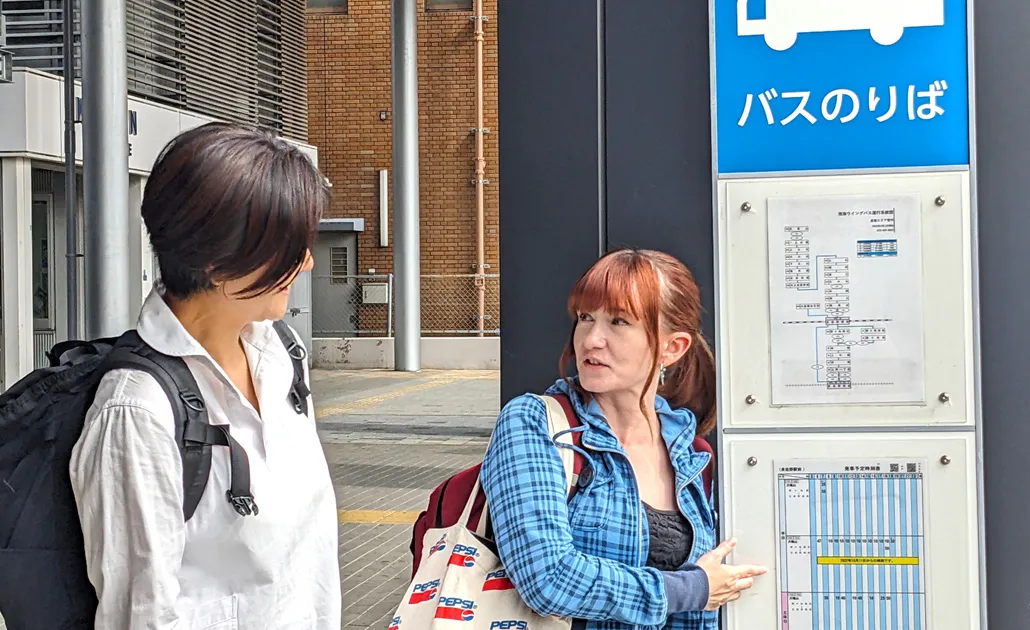
![]() Approx. 17 minutes on the Nankai Wing Bus bound for Inunaki-yama from Izumisano Station
Approx. 17 minutes on the Nankai Wing Bus bound for Inunaki-yama from Izumisano Station
![]() Approx. 6 minutes on the Nankai Wing Bus bound for Inunaki-yama from JR Hineno Station
Approx. 6 minutes on the Nankai Wing Bus bound for Inunaki-yama from JR Hineno Station

![]() 10:27 Arrive at the bus stop in front of Jigen-in Temple
10:27 Arrive at the bus stop in front of Jigen-in Temple
 Get off at “Higashiue” Bus Stop
Get off at “Higashiue” Bus Stop
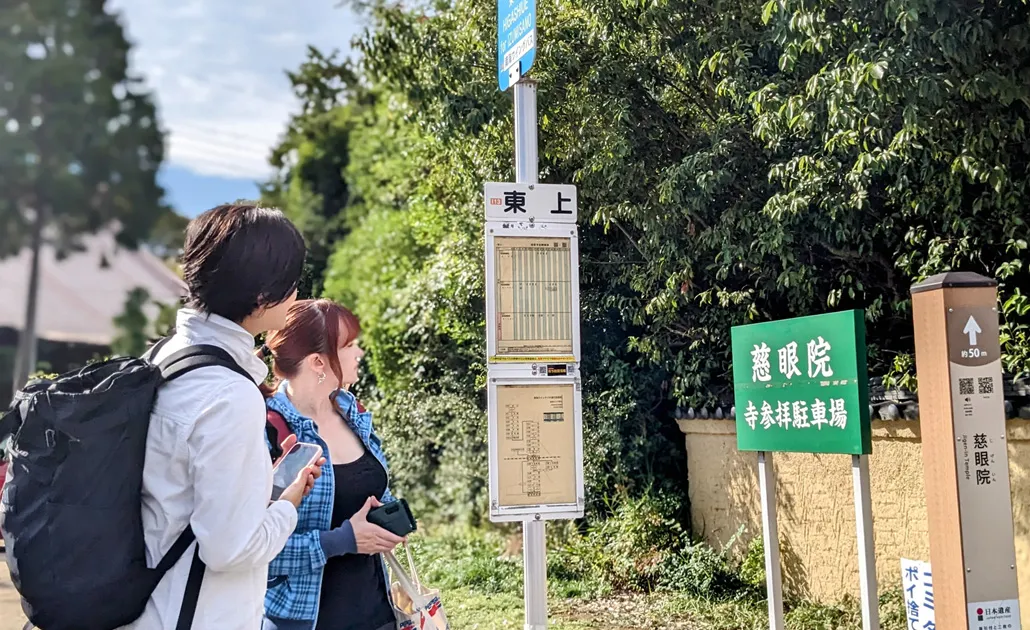
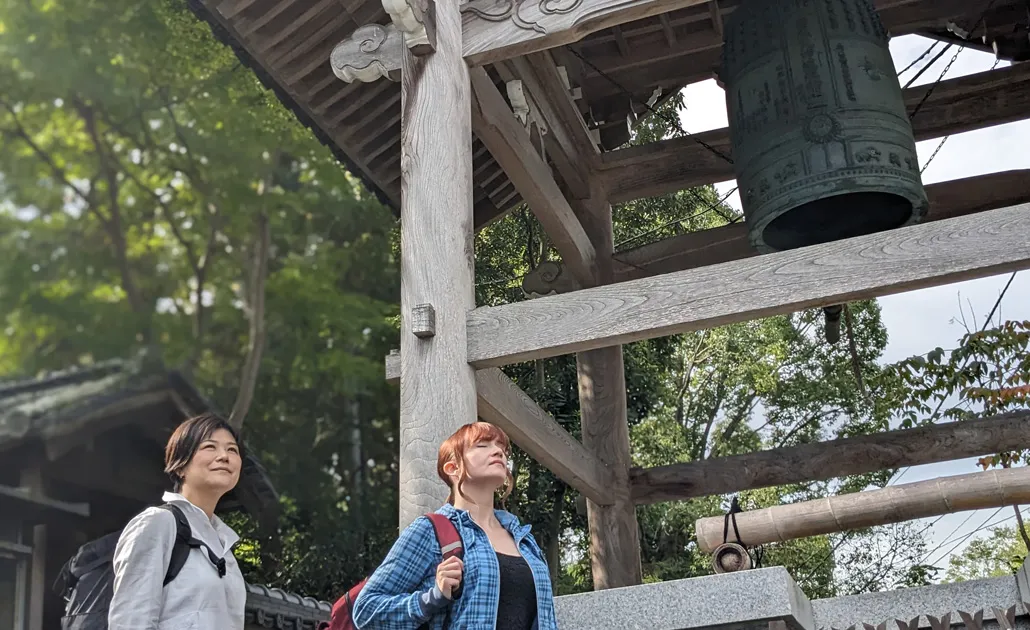
![]() 10:30
10:30
The oldest temple in Senshū(Southern Osaka). Start your visit with a prayer at the main
hall.
 Jigen-in Temple
Jigen-in Temple
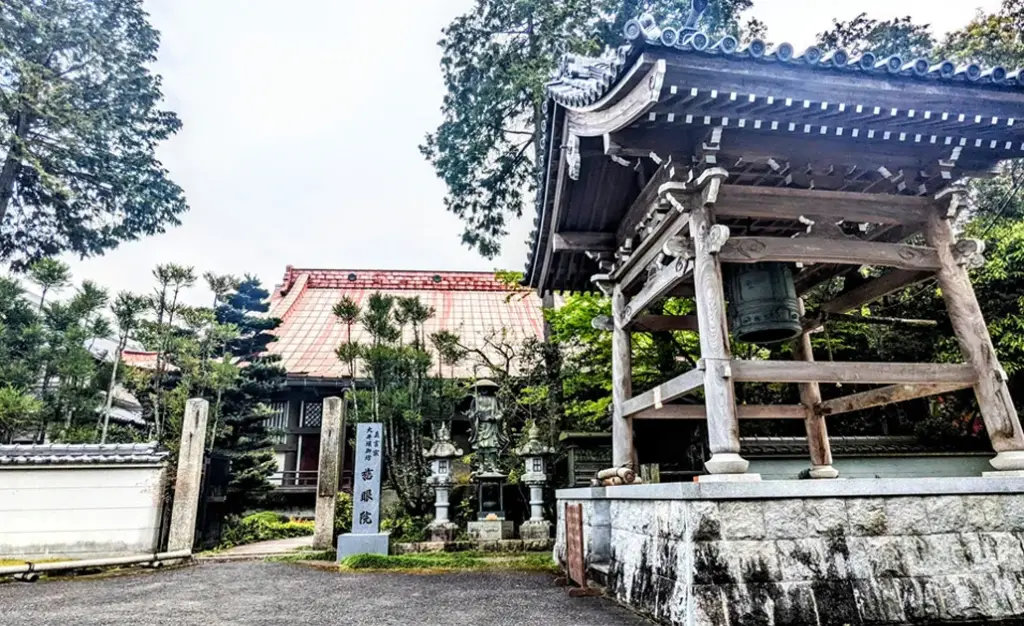
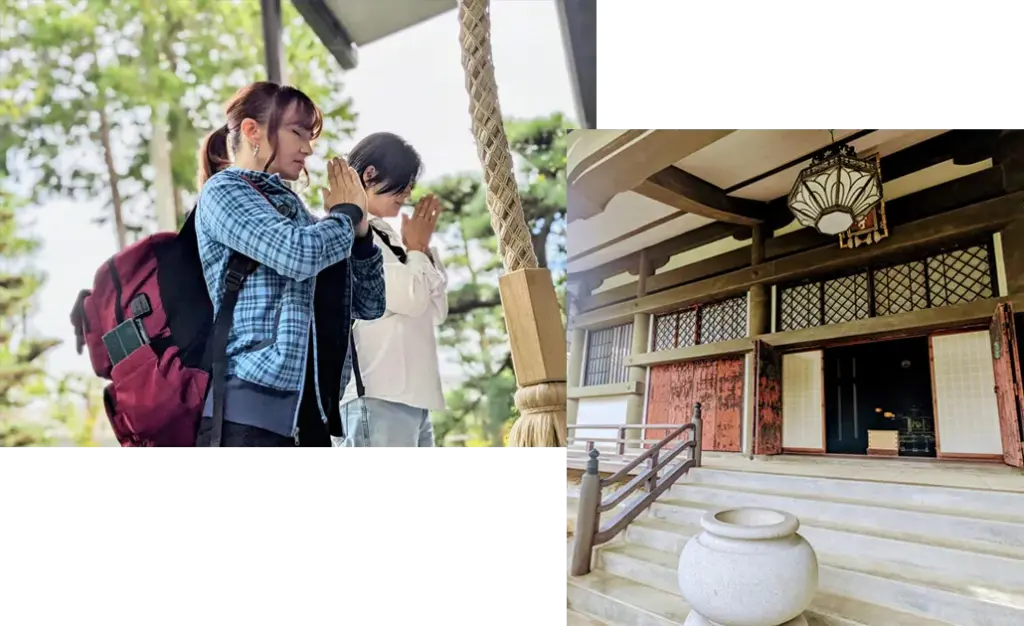
Jigen-in Temple – The Oldest Temple in Senshū (Southern Osaka)
Known as the oldest temple in the Senshū region of southern Osaka, Jigen-in Temple invites
visitors to begin their journey with a respectful prayer at the main hall.
To view the National Treasure Tahōtō Pagoda and the Important Cultural Property Kondō (Main
Hall), advance reservations are required.
An admission fee of ¥300 per person applies.
On the day of your visit, please ring the intercom at the kuri (residential quarters).
You will be welcomed by the head priest and guided into the temple grounds.
Follow the stone paths carefully—please take care not to step on the beautifully maintained
moss as you make your way through this sacred space.
An Important Cultural Property built in the Kamakura period
Kondō (Main Hall of Worship)
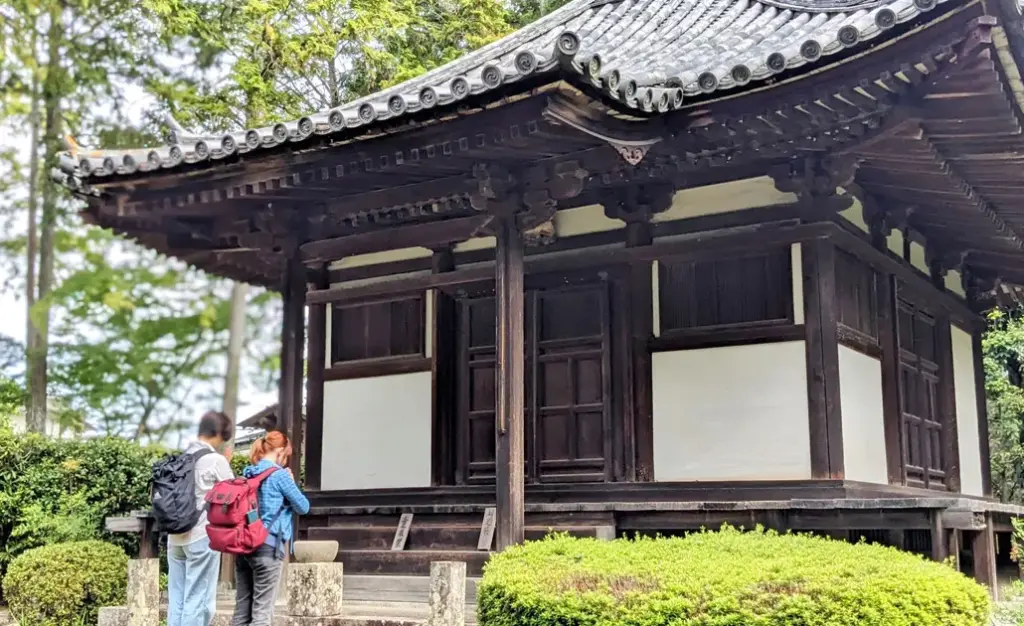
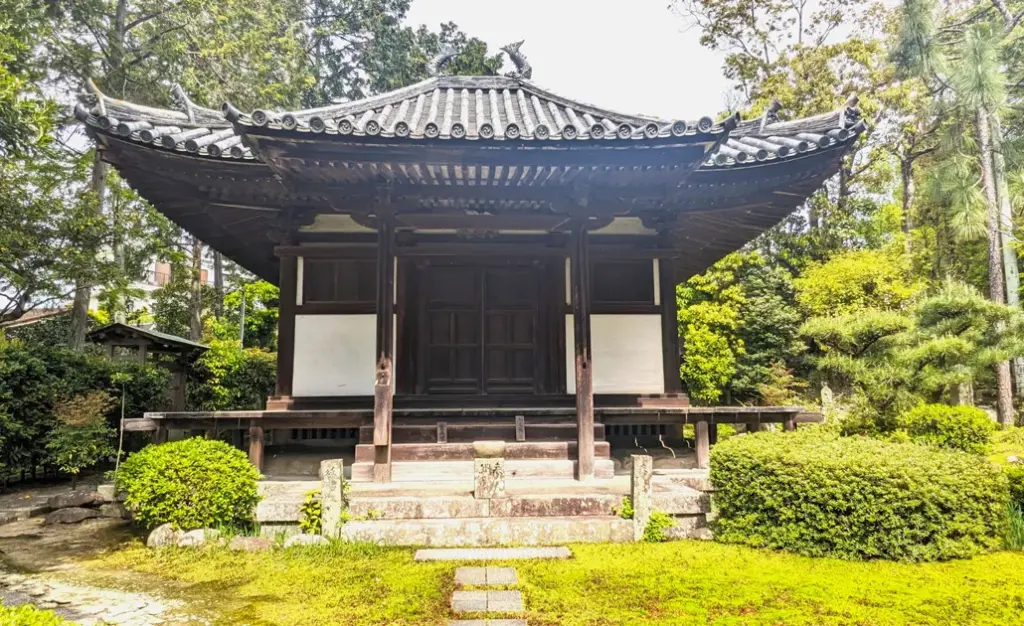
“Kondō” refers to the hall that enshrines the temple’s most sacred and important objects.
Inside, you’ll find statues of Yakushi Nyorai (the Medicine Buddha) and Bishamonten, both
revered deities in Japanese Buddhism.
Pause, place your hands together, and reflect on the deep history passed down through
generations.
Admire Izumisano’s Only National Treasure
Tahōtō Pagoda at Jigen-in Temple
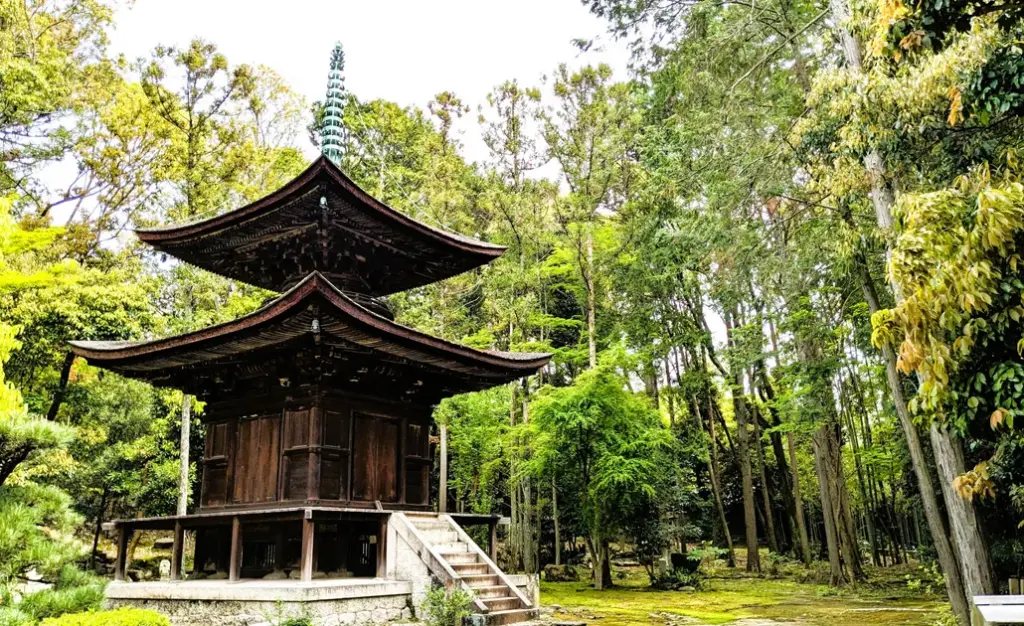
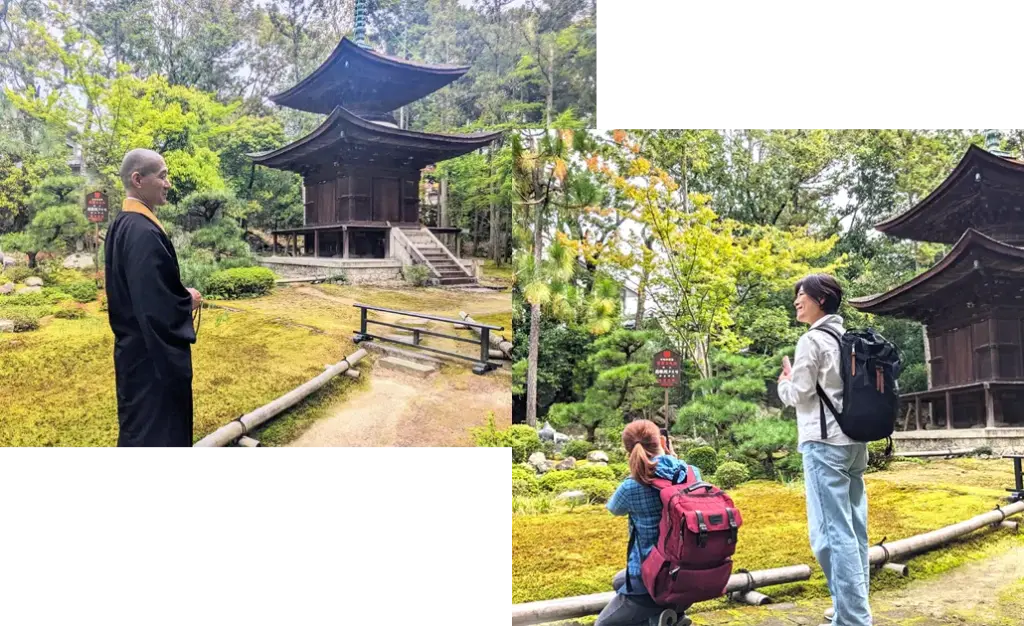
The chief priest shared the following words:
“The Tahōtō Pagoda at Jigen-in Temple, built during the Kamakura period(1185–1333), is the
only National Treasure in Izumisano.
Its roof is made of hiwada-buki (cypress bark shingles), a rare architectural feature even across
Japan.
This modest yet elegant pagoda reflects the spirit of the Kamakura era and perfectly
complements the historical setting of the former Hineno-shō estate.
I invite you to feel its quiet beauty for yourself.”
This Tahōtō Pagoda was constructed in 1271 by imperial decree of Emperor Tenmu.
Although visitors cannot enter the building, you can view it from a special garden area with an
advance reservation.
Take your time to admire this National Treasure alongside the tranquil moss garden, which
transforms beautifully with the seasons.
Hiwada-buki (Cypress Bark Roofing)
Hiwada-buki is a traditional Japanese roofing technique in which layers of cypress bark
(hinoki) are carefully laid over one another to form a roof.
Renowned for its excellent durability against wind and rain, this method not only provides
superior waterproofing and insulation, but also gains a dignified appearance as it weathers
over time.
Because of its exceptional compatibility with Japan’s climate, hiwada-buki was widely used in
historical architecture.
However, due to a decline in skilled artisans and the scarcity of materials, it is now
considered a highly rare and valuable technique.
Commemorate Your Visit with a Goshuin Seal
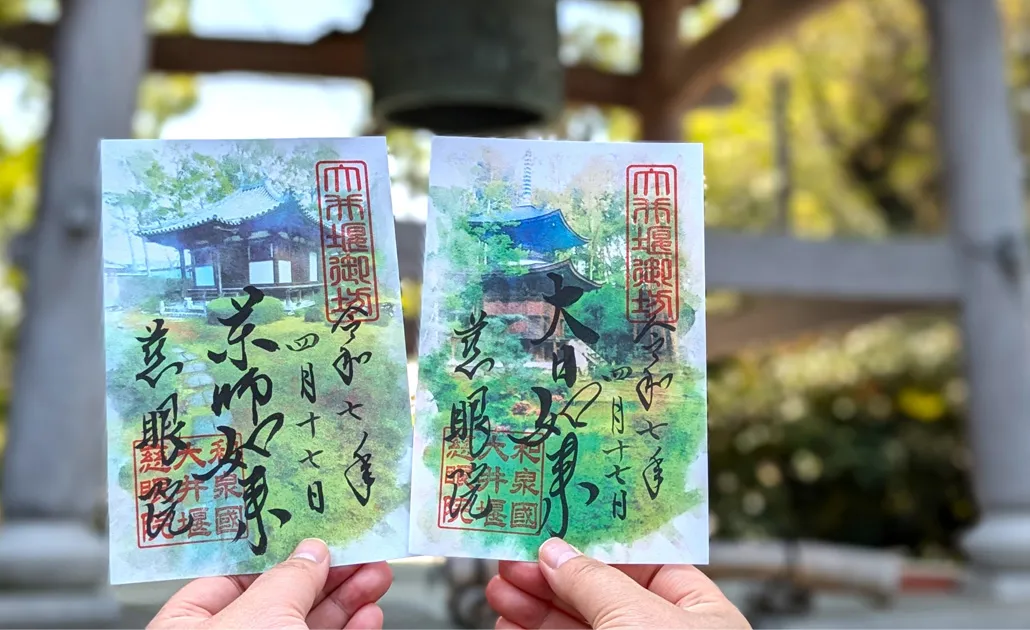
As a special keepsake, you can receive a goshuin—a traditional temple stamp—featuring artistic
illustrations of both the Kondō Hall and the Tahōtō Pagoda (¥500 each).
Each seal is carefully handwritten by temple staff, with colors and calligraphy thoughtfully
chosen to reflect the spirit and season of the temple grounds.
Goshuin are unique to each temple and make a meaningful souvenir of your spiritual journey.
Address:626 Hineno, Izumisano
Phone:072-467-0092(Japanese Oonly)
Visitor Information:
Advance reservations are required for viewing. An admission fee of ¥300 per person is collected as a
mountain entry fee (sanryō).
Please note that viewing may not be possible on certain dates due to religious ceremonies or temple
events.For group visits, guests will be divided into smaller sub-groups to ensure a quiet and respectful
experience.
Visiting hours: 8:00 AM – 4:00 PM
View Detailed Page

(2 minutes on foot)
![]() 11:00 A shrine famous for the Makura Festival (Pillow Festival)
11:00 A shrine famous for the Makura Festival (Pillow Festival)
 Hine Shrine
Hine Shrine
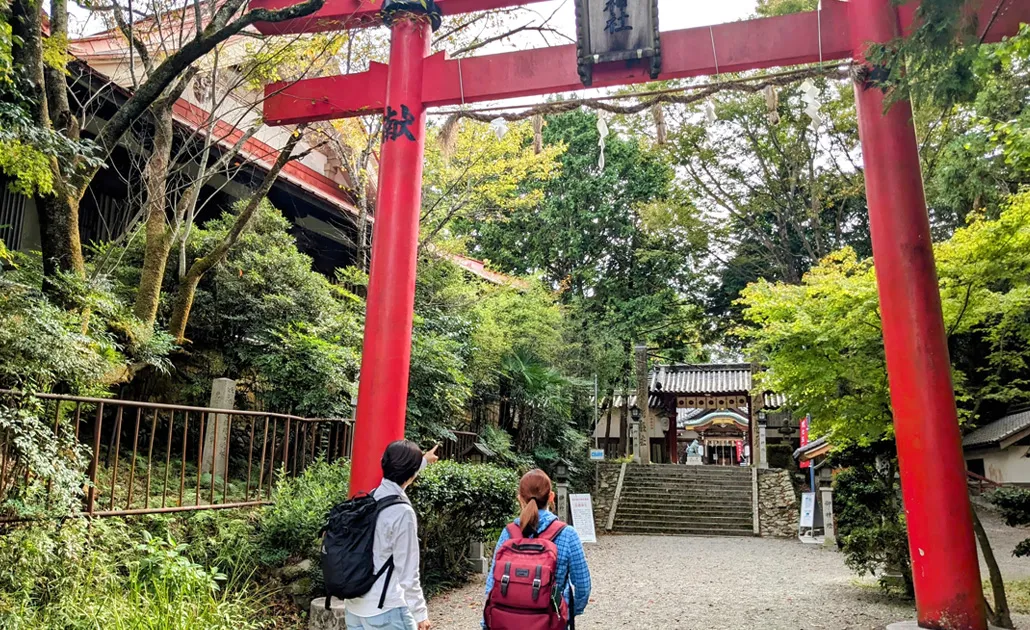
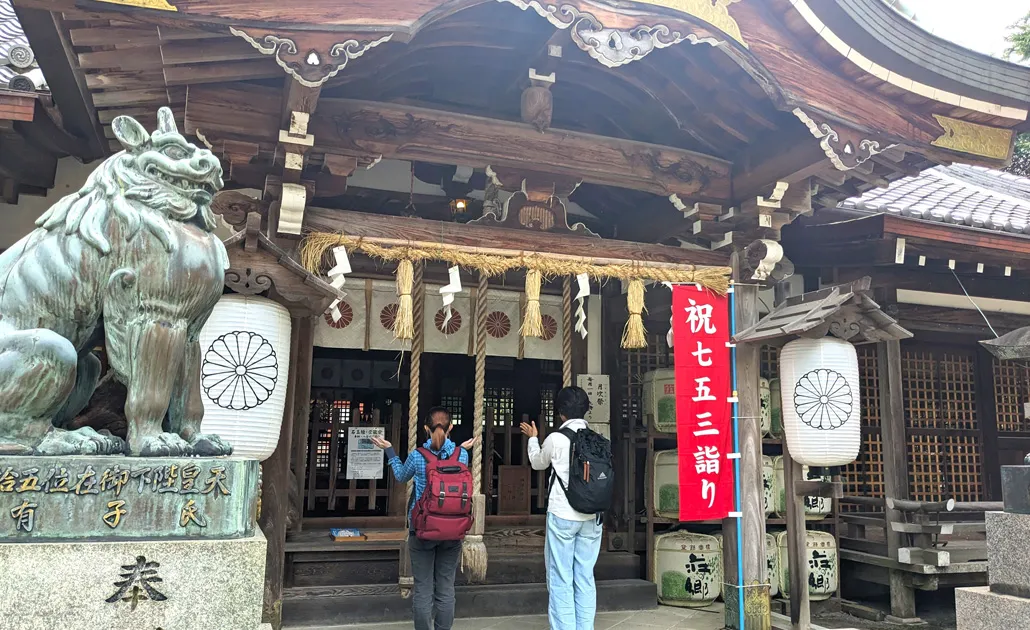
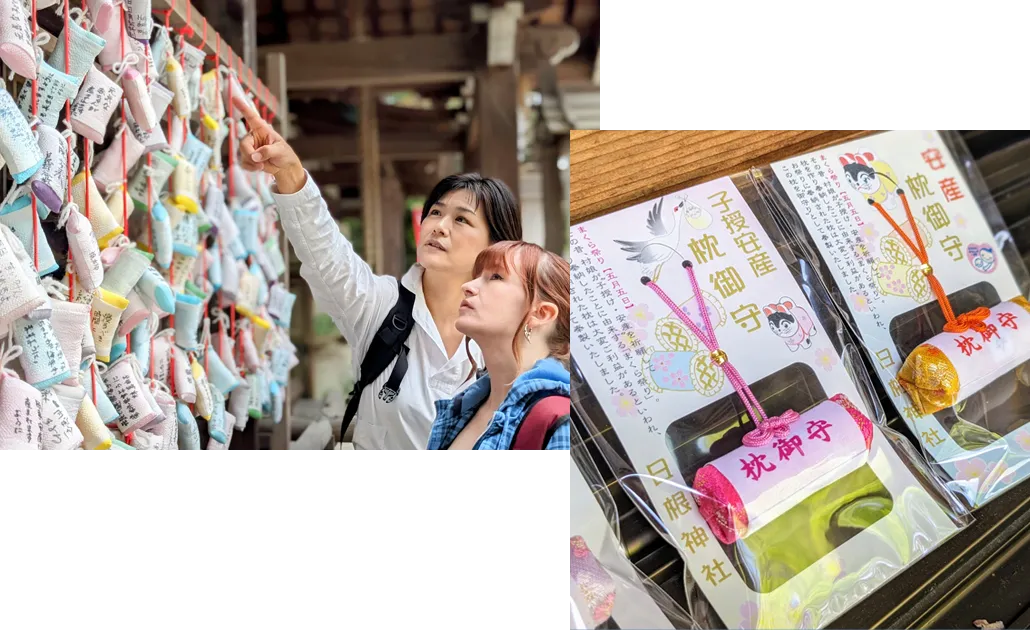
Located next to Jigen-in Temple, Hine Shrine is said to be associated with Emperor Jimmu,
Japan’s legendary first emperor.
The rare sight of a shrine and a temple standing side by side reflects the traditional Japanese
belief system of Shinbutsu-shūgō, a fusion of Shinto and Buddhism.
Hine Shrine is especially known for the unique Makura Festival (“Pillow Festival”) held in
spring—an event that is rare even across Japan.
In recent years, the shrine has also gained popularity as a place to pray for peaceful sleep,
attracting visitors from all over the country who struggle with insomnia.
Don’t forget to pick up a charming omamori (amulet) shaped like a pillow—perfect as a souvenir
or a gentle charm for restful nights.
Address:631 Hineno, Izumisano City
Phone:072-467-0092(Japanese Only)
Visiting Hours:9:00~16:00 9:00 AM – 4:00 PM
View Detailed Page
\Check this out too!/
Yukawa Irrigation Canal (Designated as a World Irrigation Heritage Site)
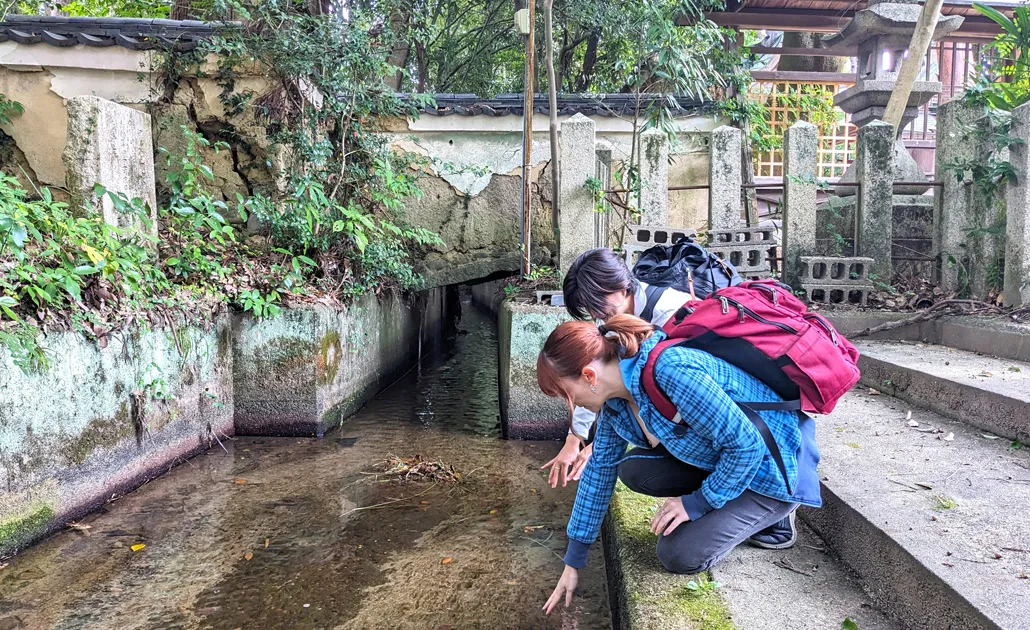
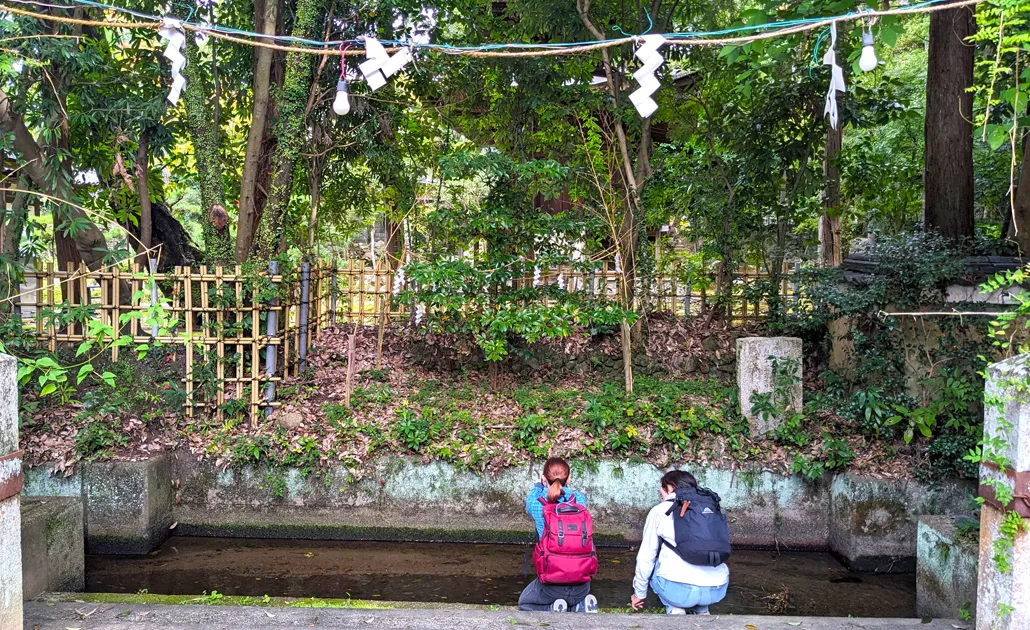
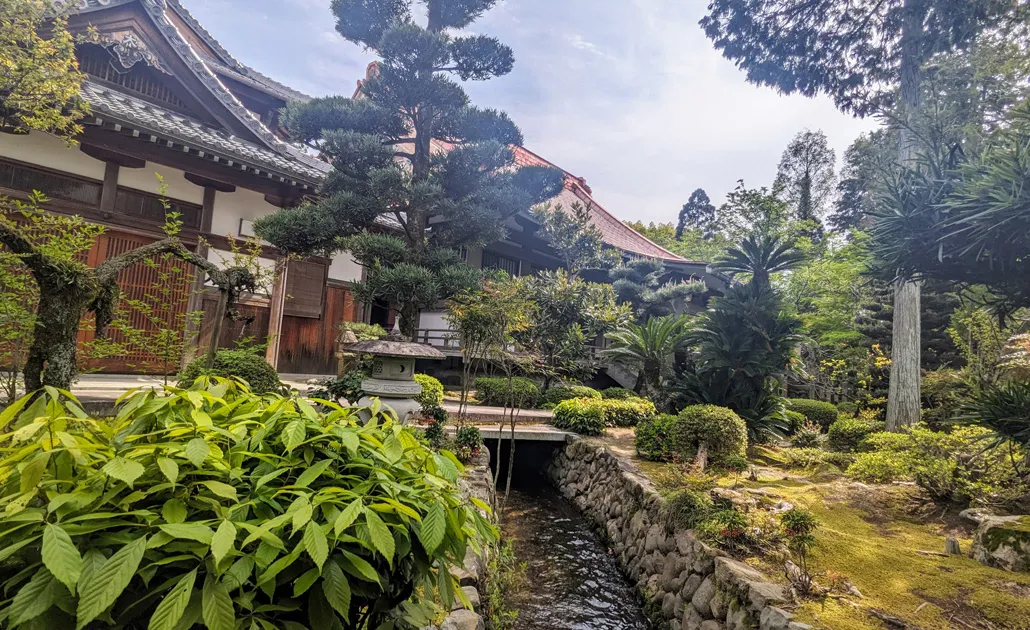
Yukawa Irrigation Canal – A Living Legacy of Medieval Engineering
Quietly flowing through the grounds of Jigen-in Temple and Hine Shrine, the Yukawa Irrigation
Canal is an agricultural waterway built nearly 800 years ago—and it is still in use today.
Drawing water from the Kashii River, it runs approximately 2.75 kilometers using only a 5-meter
elevation difference, a remarkable feat of civil engineering from the medieval period.
Originally developed to support and expand the cultivated lands of the Hineno-shō manor, the
canal played a crucial role in local agriculture.
In 2022, it was recognized as a World Irrigation Heritage Site, and it is also the only irrigation
canal in Japan designated as a National Historic Site, making it the oldest functioning canal in
Osaka Prefecture.
Today, it continues to showcase the advanced engineering skills of Japan’s medieval past.

(3 minutes on foot)
![]() 11:30
11:30
A Cherry Blossom Hotspot in Spring ✿ Refresh Yourself in This Nature-Filled Park♪
 Oizeki Park
Oizeki Park
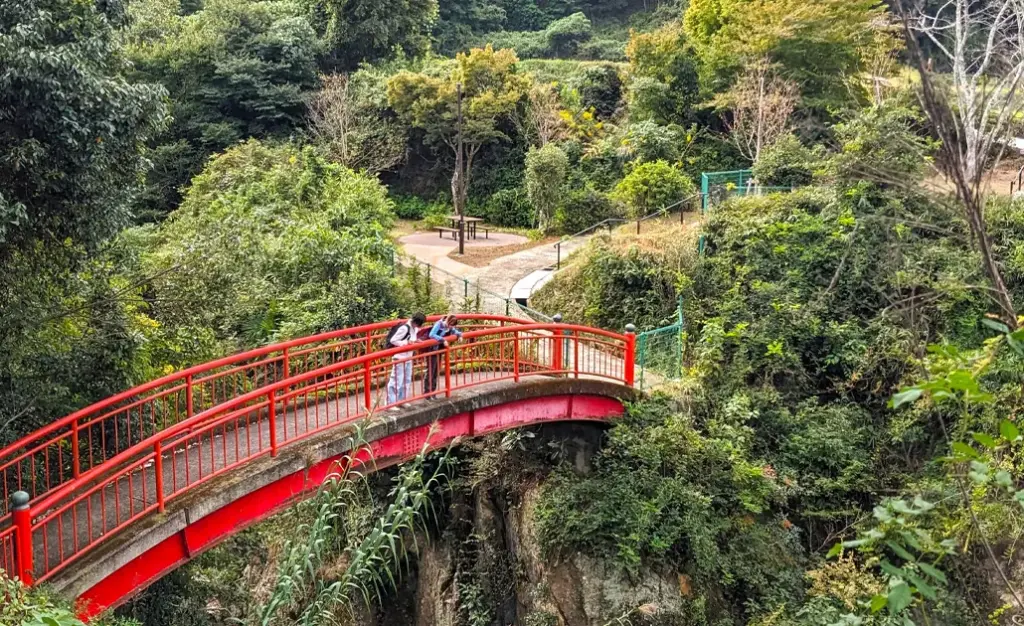
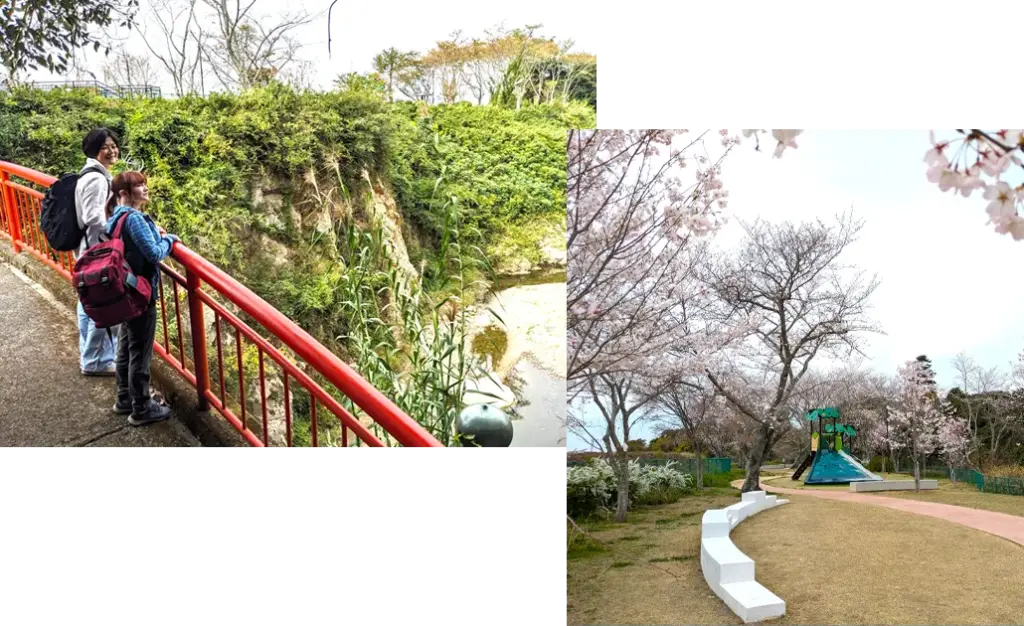
This picturesque park stretches across both sides of the Kashii River, which flows east to west
through Izumisano City, and is nestled beside Hine Shrine.
It offers breathtaking natural beauty, especially in spring, when Somei Yoshino cherry blossoms,
bloom in full glory and the area comes alive with the Sakura Festival.
The view from the park’s traditional arched bridge is especially refreshing—an ideal spot to
take in the sights and sounds of the season.

(Approx. 5 minutes on foot)
![]() 12:02
12:02
Return to the area in front of Jigen-in Temple and wait for the bus back
 “Higashiue” Bus Stop
“Higashiue” Bus Stop
Nankai Wing Bus bound for Izumisano Station
Approx. 22 minutes by Nankai Wing Bus

![]() 12:24
12:24
Get off at “Izumisano Station” Bus Stop (Nankai Bus)

 Get off at “Izumisano Station” Bus Stop (Nankai Bus)
Get off at “Izumisano Station” Bus Stop (Nankai Bus)
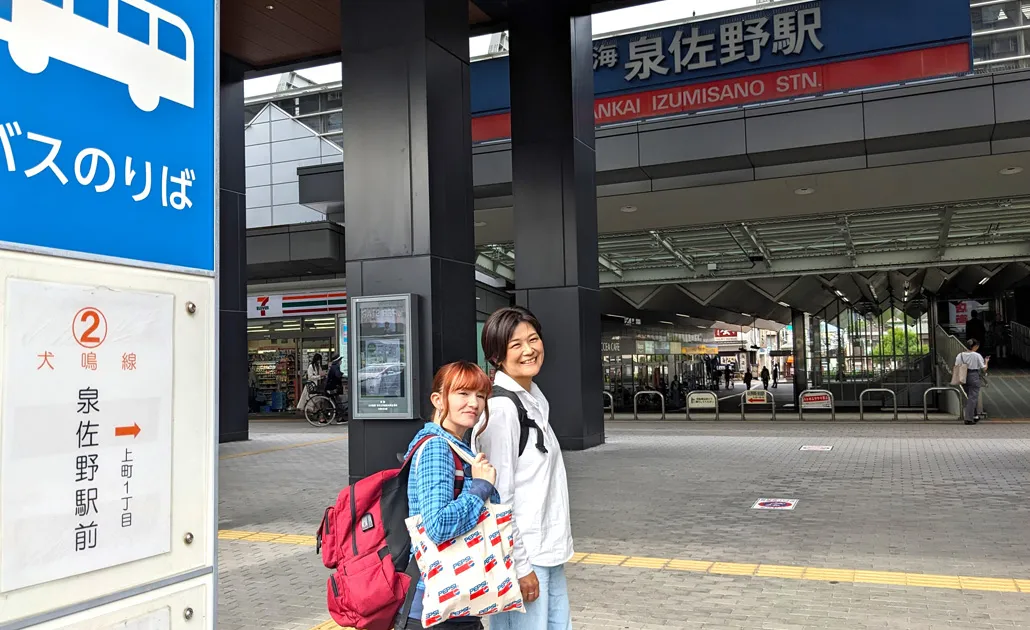
![]() 12:30
12:30
Enjoy Local Cuisine Around Izumisano Station
Osaka Local Cuisine Sora – Izumisano Station Store
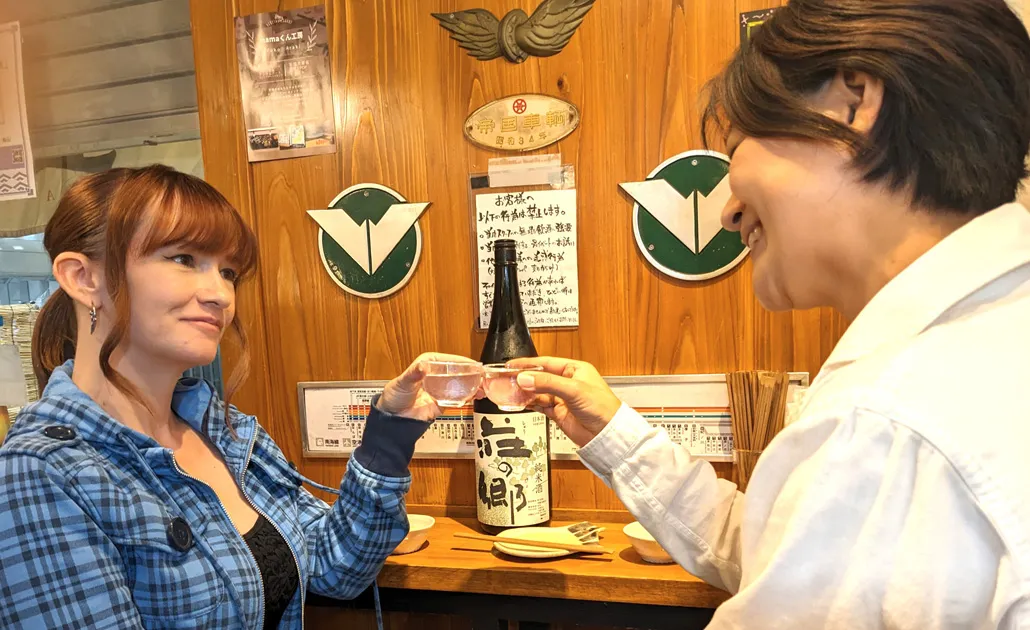

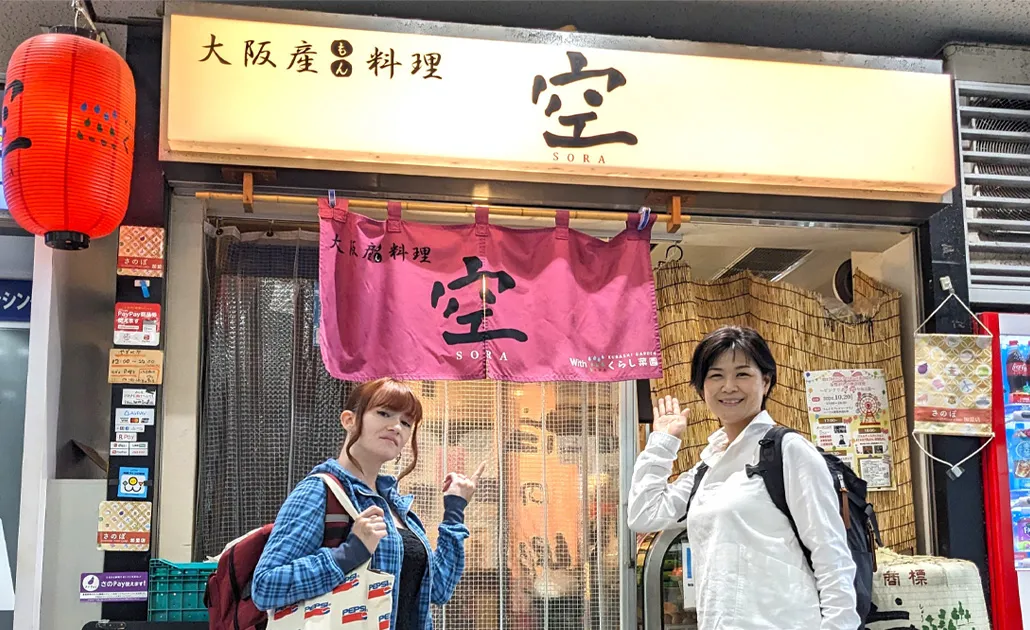
This friendly izakaya, located inside Nankai Izumisano Station, is dedicated to showcasing the
best of Osaka Senshū’s local ingredients.
Popular even at lunchtime, the menu features standout dishes like grilled Naniwa Kuro-ushi
(black wagyu beef) on a ceramic plate and carpaccio with Senshū’s famous Mizu Nasu eggplant
and prosciutto.
You can also enjoy local drinks such as sake from Kitashoju Sake Brewery—the only sake
brewery in Izumisano—and craft beer from KIX BEER.
Whether you’re traveling through or staying nearby, it’s the perfect place to casually drop in
and raise a glass to local flavor!
Address:3-11-41 Uemachi, Izumisano City, next to the ticket gate at Nankai Izumisano Station
Phone:090-5463-6691(Japanese Only)
Business Hours:12:00 PM – 9:00 PM (Last Order: 8:00 PM)
Days Closed:Mondays and New Year holidays
View Detailed Page
\Check this out too!/
Oshokujidokoro Ueda
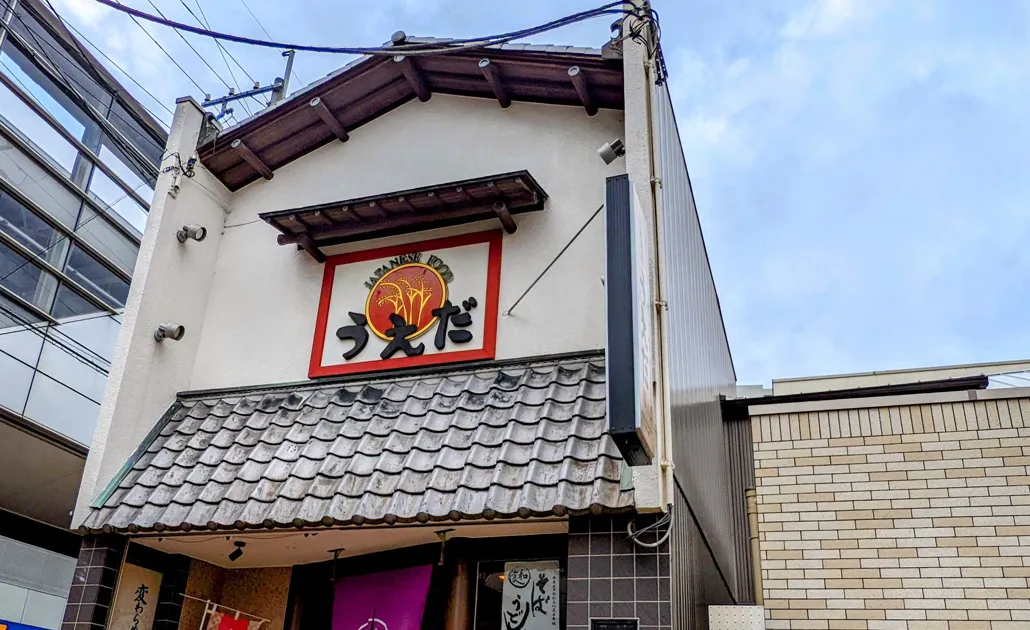
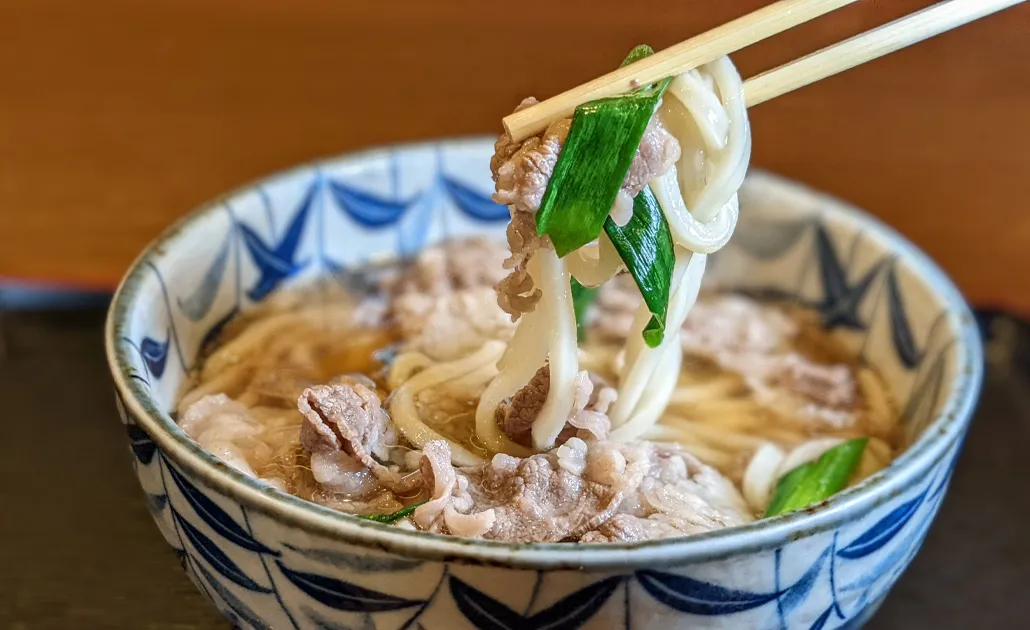
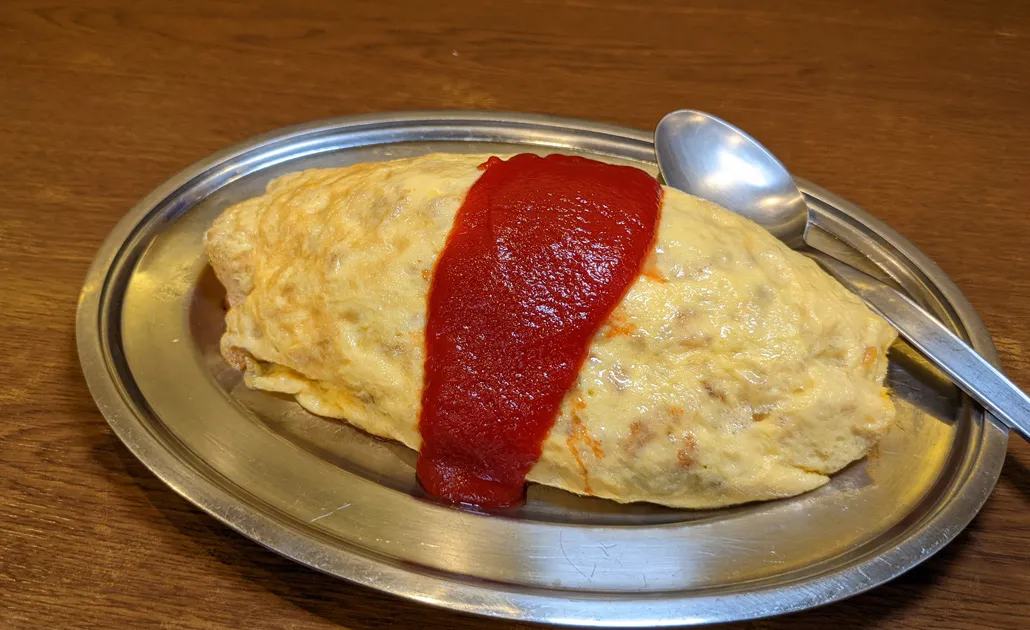
Founded in 1920 (Taisho 9), this local favorite still serves the same flavorful dashi broth passed
down for over a century.
Originally a udon shop, its most popular dish is the Niku Udon (beef udon). Another must-try is
the retro-style omurice, served on a classic stainless steel plate—a nostalgic menu item that’s
been around since the 1980s.
Lunch here is very affordable, with meals starting around ¥800.
In the evening, the shop also functions as a casual izakaya, offering local delicacies like whole
deep-fried Senshū anago (conger eel) and crispy fried gatcho (a small, crunchy local fish
popular in Senshū).
Perfect for both a hearty meal and a relaxing drink!
Address:1-22 Wakamiya-cho, Izumisano City
Phone:072-462-0344(Japanese Only)
Business Hours: Tuesday to Saturday: 11:00 AM – 10:00 PM
Sunday: 11:00 AM – 9:00 PM
Days Closed:Mondays
View Detailed Page
Admire Izumisano’s Only National Treasure Explore the Japan Heritage of Izumisano
Model Course | Explore the landscapes depicted in a medieval manor map as you journey through history and nature—visiting Izumisano’s only National Treasure, the Jigen-in Tahōtō Pagoda, the Hiné Shrine known for peaceful slumber prayers, and the Yukawa Irrigation Canal, a World Irrigation Heritage Site. |
|---|


